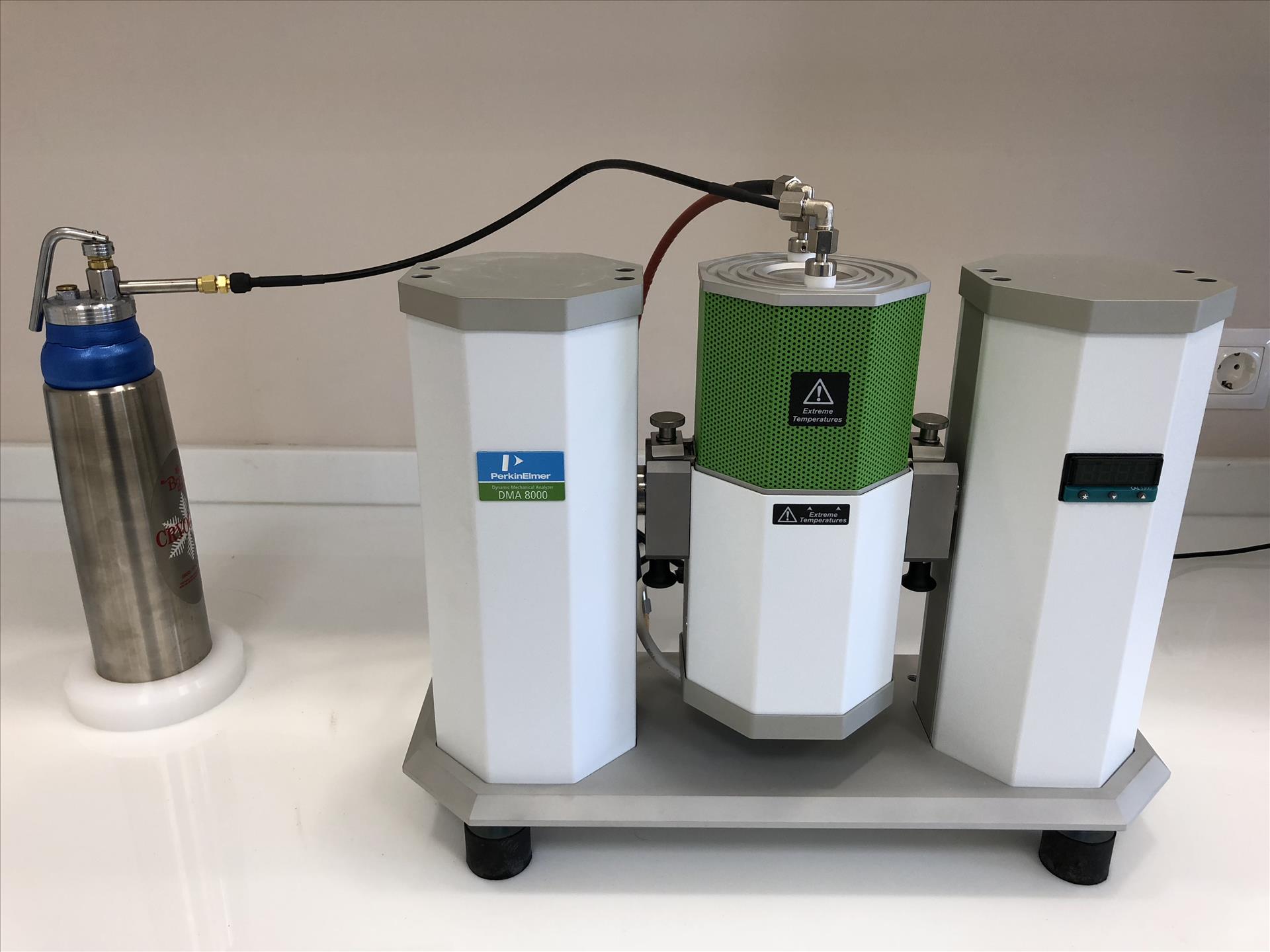Thermal characterization methods examine changes in some system properties, such as mass, volume, or reaction rate, by applying a controlled temperature program (heating, cooling, or restoring the system) to a system, and the dynamic relationships between these system properties.
SIMULTANEOUS THERMAL ANALYZER (STA)
The basis of thermogravimetric analysis (TG) is based on the determination of the mass changes occurring as a function of temperature or time in the sample being examined while applying a temperature program to the sample. Mass change in sample; It may also be the result of decomposition or oxidation reactions, as well as the separation of the components in the sample from the structure by evaporation. During the temperature program applied to the sample, differential thermal analysis (DTA) is performed by determining the temperature difference between the sample and a standard reference in the same environment as the sample. With DTA, changes in state or energy changes from chemical reactions can be determined.
Simultaneous thermal analyzer can apply more than one thermal analysis technique to the sample simultaneously. With the STA device within ARUM, the desired temperature program can be applied to the temperature of 1600 ° C from the sample and simultaneous TG and DTA data as well as DSC data can be obtained. Since the system is mainly designed as a very sensitive scale (scale accuracy ± 0,02%), very accurate quantitative results can be obtained as a result of the temperature program. Heat capacity (Cp) can be calculated automatically with the software of the system. Thermal characterization methods are used in industrial applications, especially in the field of polymer (plastic, rubber, etc.).
STA Device: Perkin Elmer STA 8000
Operating Temperature : 25° C - 1600° C
Temperature Accuracy : ± 0.5 ° C (25° C - 1000° C)
± 1 ° C (1000° C - 1600° C)
Heating Speed : 0.1 ° C / min. - 100 ° C / min. (25° C - 1000° C)
0.1 ° C / min. - 25 ° C / min. (1000° C - 1600° C)
Weight Accuracy : 0,2 µg
Information to be Obtained by STA;
- Mass Loss,
- Decomposition Temperature Determination,
- Determination of glass transition temperature,
- Melting Temperature Determination,
- Phase Change,
- Energy Values.

DIFFERENTIAL SCALE CALORIMETRY (DSC)
In differential scanning calorimetry (DSC), as in DTA, a controlled temperature program (heating, cooling or holding at a constant temperature) is applied to the sample and reference cells, but here heat flow is made to the reference so that the temperature values of both the sample and the reference are the same. The amount of heat added to the reference cell is equal to the amount of heat absorbed or released by the endothermic or exothermic reactions in the sample.
Besides the heating function, the DSC device in ARUM can also perform low temperature DSC tests by cooling the system with integrated liquid nitrogen cooling system up to -180 ° C. In addition, since the system has a power-compensation design that keeps the sample and reference in independent cells, both the sample and the reference can be kept at the same temperature. Thus, the smallest amount of heat delivered to the sample can be determined very precisely and with high accuracy even if the smallest temperature is formed between the sample and the reference.
DSC Device: Perkin Elmer DSC8000
Operating Temperature: (-180° C) - 750° C
Temperature Accuracy: ± 0,05° C
Temperature Sensitivity: ± 0.008 ° C
Heating Speed: 0.01 ° C / min. - 300 ° C / min.
Calorimetric Accuracy: <± 0,2%
Calorimetric Precision: <± 0.03%
Information to be Obtained by DSC;
- Enthalpy Values,
- Melting Temperature Determination (Tm),
- Determination of Crystallization Temperatures,
- Determination of glass transition temperature (Tg),
- Heat capacity (Cp) Determination,
- Calculation of crystallization energy.

DYNAMIC MECHANICAL ANALYZER (DMA)
DMA is an analytical device that measures the viscoelastic properties of the sample in terms of frequency, time, temperature deformation and environmental function using an increasing and decreasing load motor on a sample.
Deformation occurs when we load the load onto the material. If the material is an ideal elastic material, the deformation disappears when the load is removed. The elastic deformation is directly proportional to the load applied to the material and occurs without delay. However, in materials such as polymers, the deformation is not linear and takes place in a delayed manner. The opposite of elastic behavior is viscous behavior. In an ideal viscous material, the deformation rate is directly proportional to the load. Some materials, such as polymers, exhibit both elastic and viscous behavior, and such materials are called viscoelastic materials. DMA records temperature-related visco-elastic properties and determines the modulus of elasticity and damping coefficient by applying a force emitted to the sample.
With ARM's DMA device, polymer, polymer blends, elastomers, composites, fibers, film, resin etc. tests of large or high modulus materials can be made. In addition to the heating function, the DMA furnace allows the operation of the liquid nitrogen cooling system with a temperature range of -150° C to 400° C.
DMA Device: Perkin Elmer DMA8000
Operating Temperature: (-150 ° C) - 400 ° C
Heating Speed: 0.1 ° C / min. - 20 ° C / min.
Frequency Range: 0.01 - 600 Hz
Maximum Force: ± 10 N
Minimum Force: 0.002 N
Operating Modes: Tension, Compression, 3 Point Bending, Shear, Single Cantilever, Dual Cantilever
Information Obtained by DMA;
- Determination of glass transition temperature (Tg),
- Calculation of elasticity module,
- Calculation of damping coefficient,
- Determination of modulus and tan delta values.


